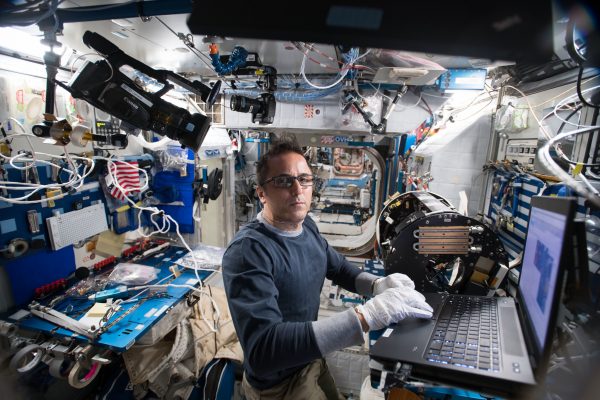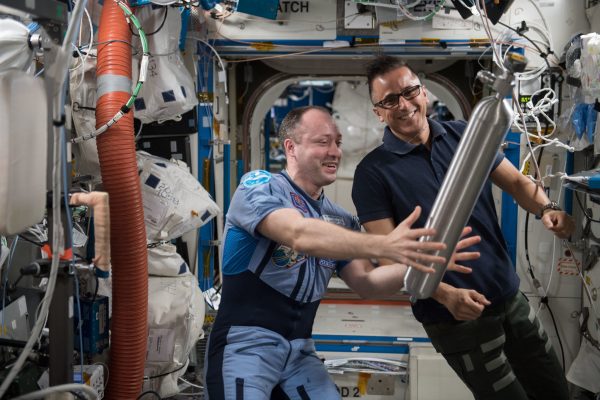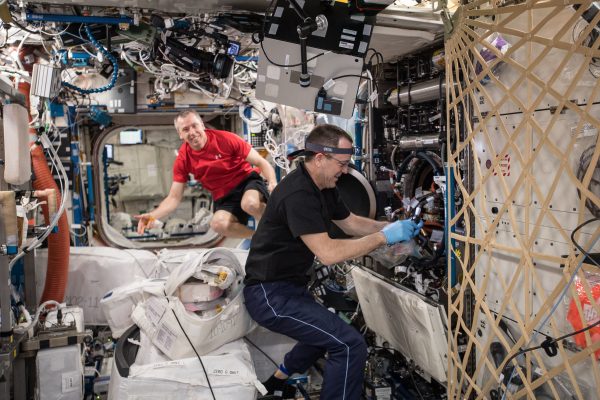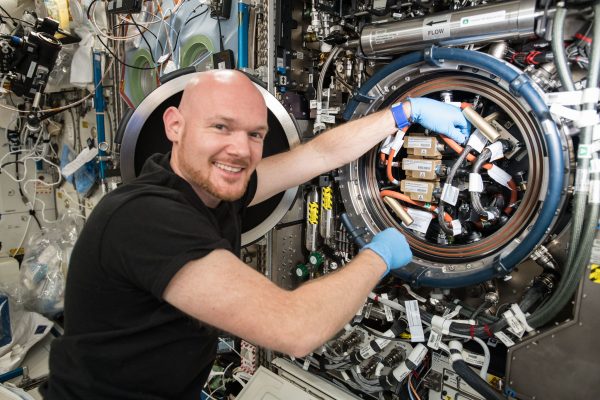Coflow Laminar Diffusion Flame (CLD Flame)
Research, especially including that already conducted in microgravity, has revealed that our current predictive ability is significantly lacking for flames at the extremes of fuel dilution, namely for sooty pure-fuel flames and dilute flames that are near extinction. The general goal of the Coflow Laminar Diffusion Flame (CLD Flame) experiment is to extend the range of flame conditions that can be accurately predicted by developing and experimentally verifying chemical kinetic and soot formation submodels. The dependence of normal coflow flames on injection velocity and fuel dilution will be carefully examined for flames at both very dilute and highly sooting conditions. Measurements will be made of the structure of diluted methane and ethylene flames in an air coflow. Lifted flames will be used as the basis for the research to avoid flame dependence on heat loss to the burner. The results of this experiment will be directly applicable to practical combustion issues such as turbulent combustion, ignition, flame stability, and more.
INVESTIGATORS
- Principal Investigator (PI): Marshall B. Long (Yale U., New Haven, CT, USA)
- Co-Investigator (Co-I): Mitchell D. Smooke (Yale U., New Haven, CT, USA)
- Researcher: Jesse A. Tinajero Jr. (Yale U., New Haven, CT, USA)
- Russian Collaboration Lead: Sergey Minaev (Far Eastern Federal U., Vladivostok, Russia)
ISS TESTING TIMELINE
- 2009 June: Proof-of-concept test as part of the Smoke Point In Co-flow Experiment (SPICE), conducted in the Microgravity Science Glovebox (MSG)
- 2012 Feb.-March: Precursor investigation, Structure & Liftoff In Combustion Experiment (SLICE), conducted using the SPICE hardware (with upgrades) in the MSG
- 2017 Nov. to 2018 Feb.: Round 1 of CLD Flame testing featuring tests with methane (CH4)
- 2018 May-Sept.: Round 2 of CLD Flame testing featuring tests with ethylene (C2H4)
- 2021 Feb.-March: Round 3 of CLD Flame testing featuring tests with dilute CH4 and dilute C2H4

GENERAL OVERVIEW
- EXPERIMENT: The Coflow Laminar Diffusion Flame (CLD Flame) experiment investigates combustion at the extremes of the fuel dilution spectrum – namely pure-fuel flames that produce soot, and highly diluted flames that are close to extinction. At first glance, the pure-fuel flame shapes resemble familiar candle flames. However, comparison of the flames under normal gravity and microgravity conditions shows a striking difference (in microgravity, the absence of buoyancy means hot gases no longer rise).
- SOOT: The yellow color of these flames comes from the incandescence of hot soot, which is made up of tiny carbon particles. These soot particles have been shown to have adverse health effects as well as being a significant contributor to climate change. Sooty microgravity flames are wider and taller than their normal gravity counterparts, and the concentration of soot can be larger by nearly a factor of ten. By careful design of the burner and close monitoring of the flow conditions, the images from the flames produced can be analyzed to give quantitative information on temperature and soot concentration. This data can then be used to compare and improve computer models of soot formation and destruction, which will have benefits on earth as well as in space.
- FUEL DILUTION: When the fuel is diluted with an inert gas (nitrogen in our case), the soot disappears and the flame can lift off the burner surface and appear as a faint blue cone. With increased dilution, the flame becomes a flat disk, and finally extinguishes. Once again, the microgravity flames are seen to behave quite differently, with highly diluted fuels producing stable flames that would not be possible under normal gravity conditions. In addition to implications for fire safety in space, results from these weak flames are important for understanding their stabilization mechanism and dilution limits.
SELECTED FINDINGS
- For sooty flames, results show that the absence of gravity can have a major effect. Flames are taller, wider, cooler, and far sootier in microgravity as compared to normal gravity.
- Soot volume fraction measurements indicate that microgravity flames contain five to eight times more soot than the equivalent normal gravity flames.
- The data has shown that for highly diluted weak flames, microgravity flames are more stable than their normal gravity counterparts. The dilution limits are extended allowing for lifted flames at lower fuel concentrations than observed in normal gravity.
The experiment has provided high-fidelity quantitative measurements of axially symmetric non-premixed flames over a wide range of flow conditions, without the complication of buoyancy forces that are experienced by flames on Earth. These results, coupled with carefully measured flow boundary conditions, will provide a rigorous testbed for verifying computational models.
International Space Station Ops Images


More specifically, the astronauts replaced a depleted air bottle at the space station’s Combustion Integrated Rack (CIR) for use in ACME’s Coflow Laminar Diffusion Flame (CLD Flame) and Electric-Field Effects on Laminar Diffusion Flames (E-FIELD Flames) experiments.


ACME consists of six independent studies of gaseous flames, where this replacement was made to support ongoing tests of the Coflow Laminar Diffusion Flame (CLD Flame) investigation.
